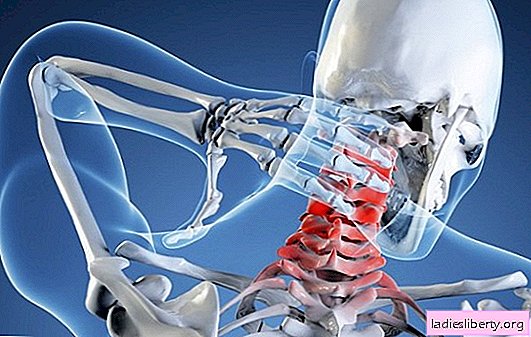
Gonorrhea in women is a typical infectious disease that is transmitted sexually. Translated from Greek means "expiration of the seed."
The old name is gonorrhea. This sexually transmitted disease, diagnosed mainly at the age of 15 - 35 years, takes second place after chlamydia.
According to WHO, about 62 million patients with gonorrhea appear in the world every year.
Among the probable transmission routes, the main one is sexual (98%), moreover, the transmission of infection occurs with all variants of sexual contact. Therefore, in addition to the organs of the genitourinary system, the rectum, nasopharynx, and eyes can be involved in the process.
With a single contact with a partner infected with gonorrhea, the risk of a disease is 60 - 90%.
In 80% of cases with gonorrhea, trichomonads or chlamydia are detected. Both sexual partners become infected and get sick.
At birth gonococcus enters the mucous membrane of the newborn’s eye, causing blenorrhea (suppuration), in girls it can penetrate through the genital gap.
There is another transmission route - through dishes, pool water, a washcloth, someone else's personal linen, a towel, bed linen, and other personal hygiene items - household. But this happens very rarely, because gonococcus exists in the external environment for no more than four hours.
Infection can happen if a certain amount of the pathogen enters the body, which is unlikely in the everyday way.
Gonorrhea is an insidious disease, the symptoms of which are hidden and do not appear for a long time. Therefore, most women who become infected with gonorrhea do not suspect this for a long time and are a source of infection. This is due to the existence of the gonococcus. In the body, it is located both on the surface of cells and intracellularly (in leukocytes, in epithelial cells), that is, it exists in a latent form and therefore is difficult to treat.
Gonorrhea in women - causes
The cause of gonorrhea is a gram-negative diplococcus - gonococcus.
Thanks to the produced proteins and using the available villi, the gonococcus is firmly attached to the epithelial cells, causing their death. It is phagocytosed (absorbed) by neutrophils (cells of the human body), but does not die, but continues its life activity and retains the ability to reproduce. It causes a local inflammatory process, but when it enters the blood and lymph, the process is generalized, which leads to sepsis.
The causes of gonorrhea in women that contribute to infection with gonococcus include the following:
- low general culture;
- early onset of sexual activity;
- promiscuous sexual intercourse with many partners;
- lack of contraception during sexual intercourse;
The reasons for the further spread of gonorrhea in women are:
- childbirth;
- menstruation;
- medical diagnostic and therapeutic interventions (abortion, probing of the uterus, etc.).
Gonorrhea in women - symptoms
The incubation period for gonorrhea is from two to 30 days. If a woman takes antibiotics or sulfa drugs for any reason, the incubation period lengthens. Sometimes it lengthens significantly and immediately goes into a hidden stream.
Gonorrhea in women occurs in two forms:
- urogenital - affects the genitourinary system;
- extragenital - proctitis, stomatitis, pharyngitis.
In women, gonorrhea often begins asymptomatic. The patient may not even suspect that she has a disease.
The main symptoms of gonorrhea in a woman are:
- discomfort and vague pain during urination;
- profuse white-yellow-white;
- pain in the lower abdomen and in the back.
A classic symptom for gonorrhea in women is a large number of vaginal discharge of white or yellowish color with an unpleasant odor. Many women often take this symptom for the manifestation of candidiasis or some kind of inflammatory process and begin to treat themselves: they take antibiotics or antifungal drugs, various anti-inflammatory drugs, thereby lubricating the true picture of the disease.
1. If the urogenital system is involved, the most common lesion of the cervix is gonorrhea cervicitis. The main symptoms in women with gonorrhea cervicitis are profuse leucorrhoea. Their selection is accompanied by itching everywhere: in the vagina, in the region of the external genitalia, in the perineum. Itching is caused by irritating effects on the skin and mucous membranes of copious discharge. Concerned by pain in the sacrum, spotting.
When a woman becomes involved in the urinary tract with gonorrhea, dysuric symptoms appear: frequent urination, a feeling of incomplete emptying of the bladder, pain and burning sensation during urination.
With ascending gonorrhea, women develop endometritis, salpingitis, and new symptoms appear: fever, chills, various disorders of the menstrual cycle (hyperpolymenorrhea, often acyclic uterine bleeding), intense pain in the lower abdomen or back. Ascending gonorrhea is the most dangerous because of the severe complications that subsequently develop.
2. The extragenital form of gonorrhea in women is manifested by proctitis, stomatitis, pharyngitis.
Proctitis in women with gonorrhea is asymptomatic, although in some cases the characteristic “gonorrheal” symptoms: pain, itching and copious specific discharge from the rectum are disturbing.
Pharyngitis with gonorrhea in women is manifested by symptoms of a usual sore throat: sore throat and pain when swallowing, fever, an increase in submandibular lymph nodes. Often the symptoms are mild: slight sore throat, hoarseness.
Stomatitis with gonorrhea is manifested by symptoms of typical stomatitis.
Such erased symptoms or their absence in women do not cause special alertness and lead to self-medication, and in the future - to various complications in connection with delaying adequate treatment. Unfortunately, up to 60% of cases of gonorrhea in women do not give vivid clinical symptoms and are often mistaken for stress, overload, and overheating.
If gonorrhea is not diagnosed in a short time and timely treatment is not started, after two months it takes a chronic course. Chronic gonorrhea has almost no symptoms, proceeds with unexpressed exacerbations.
There is gonococcus carriage (latent course): there are no symptoms of gonorrhea in women, but the pathogen is released in smears.
Gonorrhea in women - treatment
Gonorrhea treatment begins with antibiotic therapy. Penicillins, cephalosporins, fluoroquinolones are used. Since gonorrhea is combined with trichomoniasis and chlamydia, antimicrobials (metronidazole) and tetracyclines (doxycycline) are additionally prescribed.
In acute gonorrhea in women, a single dose of an antibiotic is sufficient for treatment.
The course of treatment is 7-10 days with ascending or mixed gonorrhea in women.
A gonococcal vaccine is also used, local treatment is applied (solutions of antiseptics: miramistin, potassium permanganate, chlorhexidine, etc.), immunity stimulants.
Be sure to treat a sexual partner.
Purulent complications (tubo-ovarian abscess, pyosalpinx) are treated surgically.
The complications of gonorrhea in women also include:
- infertility;
- the development of an ectopic pregnancy;
- infection of the newborn during childbirth;
- bartholinitis;
- conjunctivitis.
Prevention of gonorrhea in women
A few simple rules can prevent women with gonorrhea:
- protected sex;
- the inadmissibility of accidental sex;
- personal hygiene;
- refusal to use someone else’s linen, bedding, personal belongings of people who are possibly sick or infected with gonorrhea.
To reduce the risk of contracting gonorrhea with unprotected dubious sexual intercourse, you can treat the external genitalia and inject 5 ml of an antiseptic (betadine, miramistin or chlorhexidine) into the vagina before intercourse. This will reduce the risk by ten times.
If dubious sexual intercourse has occurred, to reduce the risk of infection, it is necessary to urinate repeatedly no later than 1.5 hours after sex (gonococcus from the urethra is washed away with a stream of urine); thoroughly wash the external genitalia and lower abdomen; introduce an antiseptic into the vagina. In the coming days, visit a gynecologist to examine and prescribe preventive treatment.
Prevention of gonorrhea is currently a priority for venereology due to the high degree of contagion, the presence of gonococcus strains resistant to many antibiotics, the development of infertility and other serious complications.











